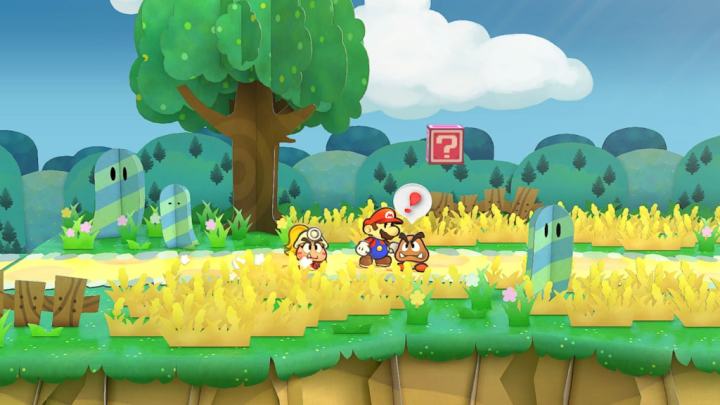
Next month, Nintendo will celebrate the 20th anniversary of one of its finest games. Nintendo GameCube classic Paper Mario: The Thousand-Year Door is getting a Nintendo Switch rerelease that’s somewhere between a remaster and a remake (not unlike the company’s recent Super Mario RPG revisit). But a game as beloved as this presents a challenge for developers: How do you stay true to the original while still upgrading it enough to justify a full-priced double-dip rather than an HD port?
I got an answer to that question when Nintendo gave members of the press a close look at the upcoming Switch release. The good news for protective purists is that the remake doesn’t seem to be changing much about the core RPG aside from a bit of dialogue translation. Instead, the new version delivers key quality of life improvements to make a cult classic a bit friendlier to newcomers. That leaves it feeling like an even lighter makeover than Super Mario RPG, but a welcome one nonetheless.
What’s new?
During my hands-off demo, Nintendo would walk me through several familiar snippets of the adventure. I’d see the opening combat tutorial in Rogueport, some fights against Pale Piranhas, and Chapter 1’s climactic clash with Hooktail. Naturally, the most obvious change here is the remake’s newly redone visuals. The Switch version is notably more crisp than the GameCube original, thanks to the removal of messy artifacts around the edges of its paper characters. It’s smoother and more vibrant overall, with some more dynamic lighting to boot.
While it’s nice to see newly retouched assets, I’d be lying if I said the visual upgrade makes too much of a difference. Like The Legend of Zelda: Wind Waker, another GameCube classic, The Thousand-Year Door featured a somewhat timeless art style that never needed much of an upgrade. We’re talking about paper environments, not a game that was ever targeting realism. The remake looks exactly the way I remember the original looking 20 years ago. Those who have played it more recently will likely see a bigger difference, but its a small difference from a casual perspective.

Subtle tweaks like that seem to be the focus for Nintendo here. Everything I see during the session is fairly 1:1 with the original release, but there are a handful of key changes that add up. Some are light, but helpful. When players press the left bumper, they can now call up a quick access wheel that lets them swap partners on the fly. The left trigger activates a new guided hint system, where Goombella will tell Mario where to go next.
Other changes are meant to help newcomers to the RPG get settled. Rogueport has a new NPC, a purple toad named the Battle Master, who carries a wealth of tutorials. He also lets players practice their assist commands so they can figure out the right timing for blocks and attacks. Another new character, a helpful mouse named Foomus, better helps players keep track of quest locations.
While Nintendo notes that it hasn’t tweaked the original game’s difficulty (and there doesn’t appear to be new settings included), the new quality of life tweaks may make it a bit more manageable. Some action commands, like guarding, seem to be just a bit more forgiving in the new version. There’s also an unspecified tweak to fast traveling that’ll help cut down on some backtracking. All of that should make the experience just a bit friendlier without changing much at all.

Beyond that, the new version peppers in a few new tributes to the original release. A new Nostalgic Tunes badge, which is shaped like a GameCube, allows players to switch back to the original 2004 soundtrack. Collecting every Star Piece in an area unlocks art for a gallery, while Shine Sprites unlock sound. The remake seems to have a new English translation too, which is closer to the original Japanese version. And Hooktail isn’t weak to cricket sounds anymore; instead, that’s been translated to frog sounds to create parity with the Japanese version.
Compared to last year’s Super Mario RPG overhaul, Paper Mario: The Thousand-Year Door seems very lightly touched. That makes sense. The original is a remarkably elegant game that was built to withstand the test of time. That’s the case with a lot of GameCube titles, which is why games like Metroid Prime have only gotten visual and quality of life changes when rereleased. This may technically be a “remake,” but don’t expect anything significant here. It’s going to play out just the way you remember it.
There are still some lingering questions about what else the new version offers. Nintendo is staying tight-lipped on whether or not it will include additional post-game content, but its clear that the goal was to keep the original intact. Considering that The Thousand-Year Door might still be the best Mario RPG Nintendo’s made, it’s hard to argue with that conservative instinct.
Paper Mario: The Thousand-Year Door launches on May 23 for Nintendo Switch.



